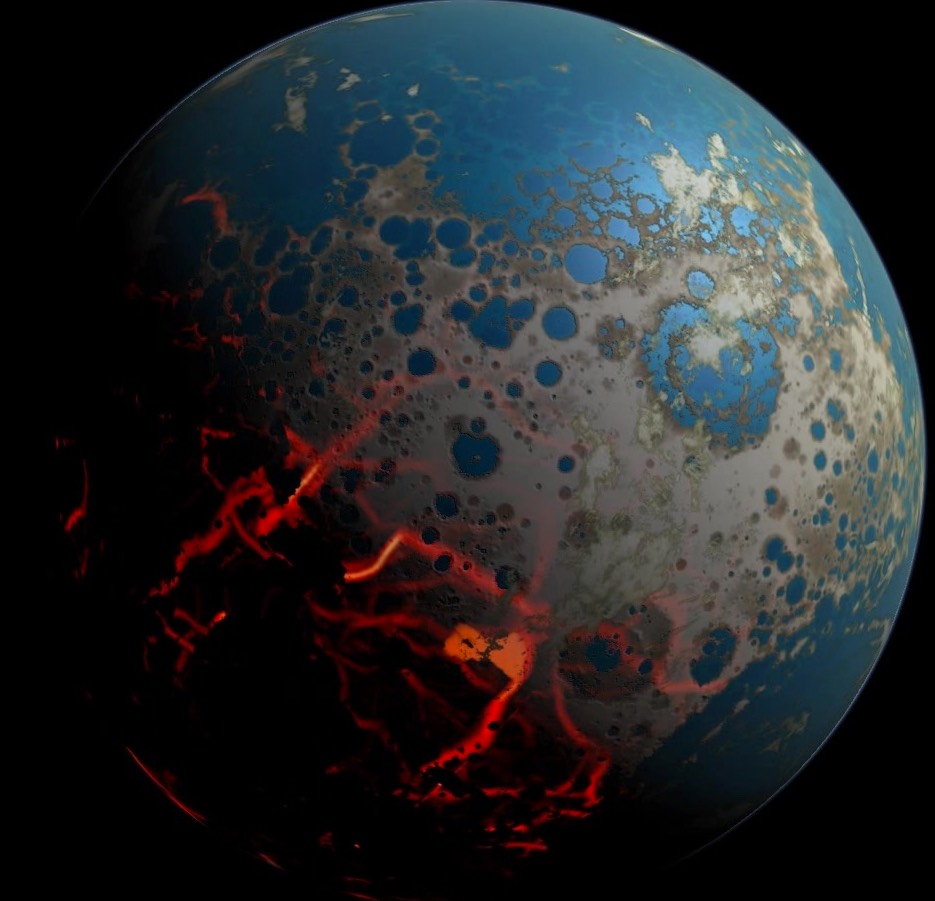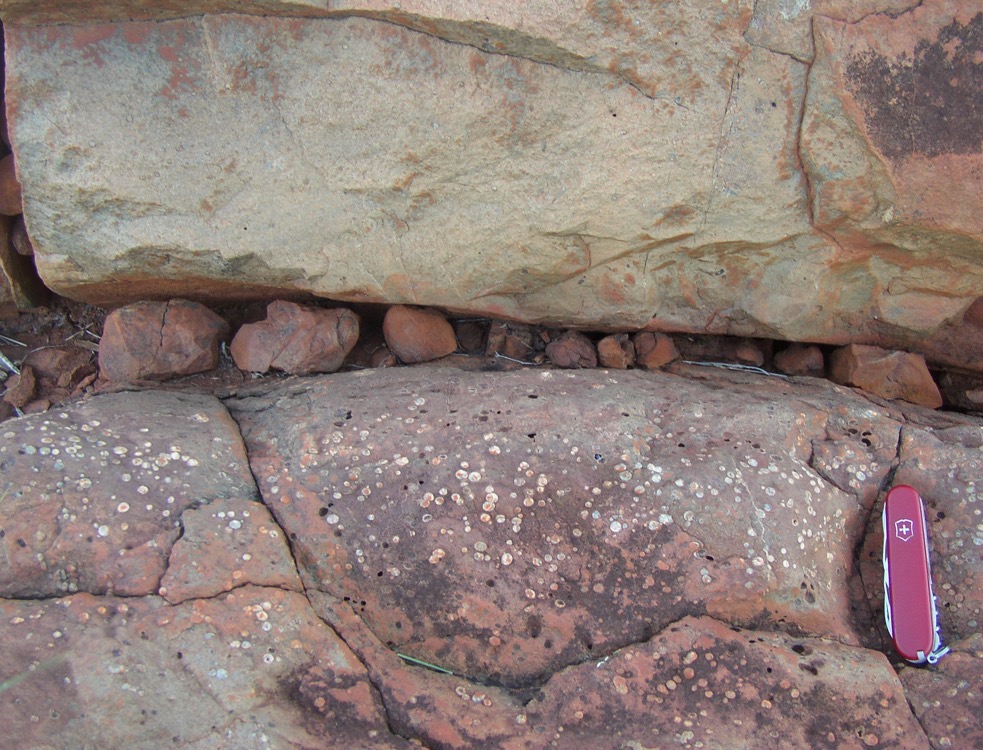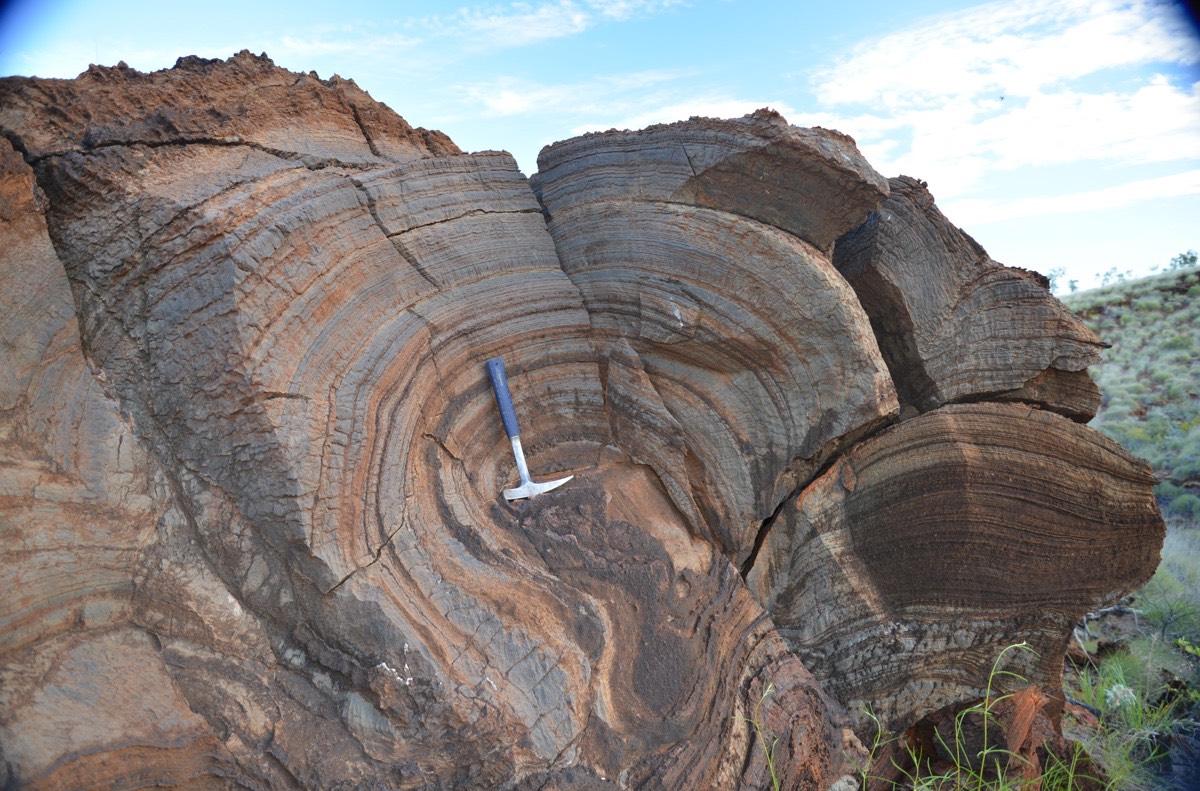Atmosphere of Early Earth May Have Been Half As Thick As Today

Bubbles in ancient Australian lava reveal that the early Earth's atmosphere might have been half as thick as it is today, scientists say.
The findings contradict the decades-long belief that Earth's early atmosphere was thick and, if confirmed, would expand the list of the types of planets capable of supporting life, the researchers said in a new study. [In Photos: Watery Ocean Hidden Beneath Earth's Surface]
Even so, other Earth scientists say the claim is sure to be controversial.
"Here you have a young Earth with an atmosphere completely different than today, and yet was very much alive," lead study author Sanjoy Som, director of the Blue Marble Space Institute of Science, told Live Science in an email. At the time, some 2.7 billion years ago, the Earth was spinning faster, and its newly formed moon raised much higher tides than Earth experiences today, Som said. It also may have been exposed to more ultraviolet light, as there was not yet an ozone layer. "[That] makes the early Earth the closest thing we have to an inhabited exoplanet [a planet outside our solar system]," Som added.
Keeping Earth warm
The study is one of many attempts to solve the "faint young sun" paradox, first raised by astronomers Carl Sagan and George Mullen in the 1970s. Under this paradox, astrophysical models of the sun's evolution say that our host star should have been fainter billions of years ago — so faint, in fact, that the Earth should have been covered in glaciers. Something was keeping the Earth warmer, and recent studies pointed to a thick nitrogen atmosphere with higher levels of water vapor, carbon dioxide, methane and other greenhouse gases as possible culprits. [In Photos: The World's Oldest Living Things]
Som and David Catling, a professor of earth and space sciences at the University of Washington, are proposing a radically different idea: that 2.7 billion years ago, Earth had a thin atmosphere that was still mostly nitrogen and whose pressure was, at most, just half of Earth's current pressure — equivalent to the pressure at about 17,000 feet (5,180 meters) above sea level.
A thinner atmosphere would ordinarily mean an overall colder Earth, the researchers said, because gases trap heat, and more gas traps more heat. But Som noted that the lower pressure actually might have meant a higher concentration of greenhouse gases because, due to the thin atmosphere, the water on this early Earth would have boiled more easily.
Get the world’s most fascinating discoveries delivered straight to your inbox.
"This would increase the amount of water vapor in the air, which is the strongest of the greenhouse gases," Som said. All of that water vapor, along with more carbon dioxide and methane, would have kept the Earth relatively balmy, the researchers suggested.
Ancient lava bubbles
The evidence for such a thin blanket of air on the early Earth came from ancient rocks in Australia. Som and his team examined the bubbles trapped in the rock. Bubbles in lava (or any other liquid) are different sizes depending on the pressure of the surrounding air. Therefore, measuring the volume of the bubbles can tell scientists what the air pressure was when the liquid (in this case, lava) solidified. The bubble size that Som and his colleagues found indicated that the atmosphere 2.7 billion years ago was thinner.
The lava also had "lava toes" — small, lobe-shaped forms — with glassy bits on the bottom. These usually indicate that the molten rock flowed into wet beach gravel — strong evidence that they formed at sea level, the researchers said.
The next question to answer was how the air got so thin. Just after Earth formed, its atmosphere still would have been thicker than it is today, scientists say. That's because nitrogen was coming from several sources, including from the atmosphere itself and from the crust and mantle, which had just been heated up by the impact that formed the moon and would release a lot of gases. (The combined amount of nitrogen from all three stays roughly the same over time — the difference is what form it is in.)
For this thinner atmosphere to be created, something had to take the nitrogen out of the air and put it somewhere else, locking it into chemical compounds. "We think biology did it," Som said.
The bacterial life-forms that emerged on Earth would have pulled the nitrogen out of the air and combined it with other elements to make new compounds, such as ammonium, the researchers said. Life-forms do this now as well — except with oxygen from the air, bacteria can return nitrogen to the atmosphere, creating part of the modern nitrogen cycle.
Those compounds, such as ammonium (NH4 ions), would get deposited into clays in the nascent seas and be carried back into the Earth as tectonic plates slid beneath each other, taking their nitrogen with them, Som said.
How did the atmosphere thicken again?
After the Great Oxygenation Event, which happened about 2.5 billion years ago, single-celled living things started emitting oxygen as waste.
Som posits two possible mechanisms responsible for putting the nitrogen back into the air as a gas at that time. First, oxygen-breathing creatures would release nitrogen in reactions with oxygen. (This happens today, and the process is called denitrification.) Another possibility is that the nitrogen that went into the Earth's mantle as ammonium got broken down into nitrogen (N2) again, allowing volcanoes to release more of it back into the atmosphere over a period of about 330 million years.
Therefore, when life was emerging on Earth, it could clearly do so with a wider range of air pressures than anyone thought possible, Som said. The research also points to the idea that the air pressure on the Earth might have fluctuated a lot more over time than scientists had thought. It also means that if life could make it here with half an atmosphere or less, it could do so elsewhere.
Life on other planets
Sami Mikhail, an assistant professor of geology at the University of St Andrews in Scotland who wasn't involved in the study, said the work will be controversial. "It's exciting because the result seems robust," Mikhail told Live Science. He has also done studies on the Earth's early atmosphere, and the results of those studies also pointed to a thin atmosphere on early Earth. "If they are right, we will have to rethink what we know about the Earth's evolution," he said. [7 Theories on the Origin of Life on Earth]
Mikhail said the work expands the kinds of worlds on which scientists think life might be possible.
"When we take a look at [an exoplanet] system with an Earth-like planet, we might find some with thin atmospheres like this," he said. "This means they could evolve into Earths" billions of years in the future, he added.
The research was detailed online May 9 in the journal Nature Geoscience.
Follow Live Science on Twitter @livescience. We're also on Facebook & Google+. Original article on Live Science.





